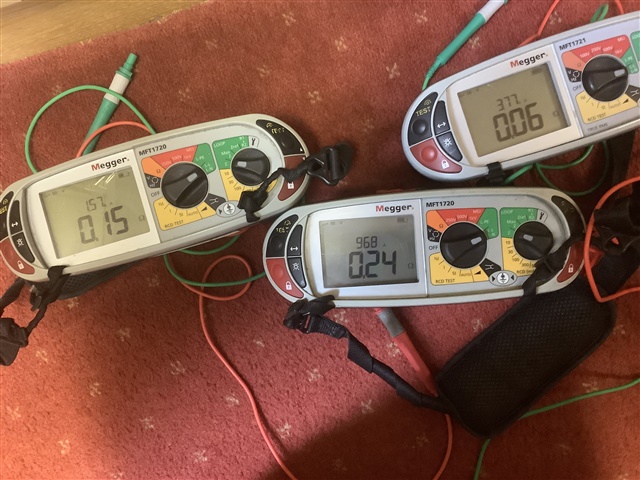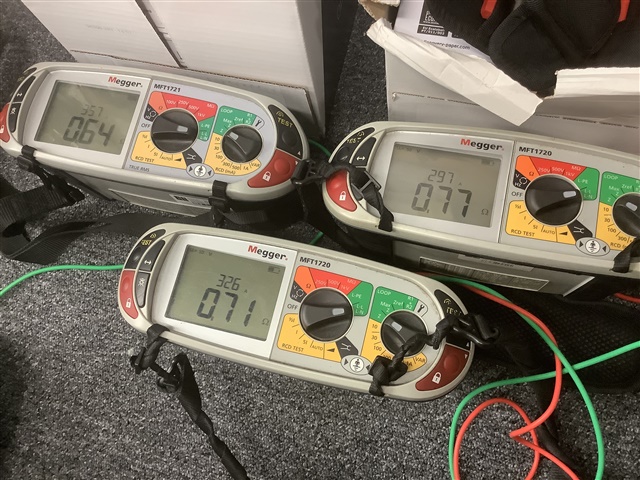Not sure what to record! 
All calibrated around the same time. Three readings taken on each instrument with swapped leads and probes all fairly consistent with photo.
Then move to a socket opened up using same leads;

Three readings taken on each instrument with swapped leads and probes all fairly consistent with photo.
I notice all on rechargeable batteries but on different SoC also? Has this been tried with instruments on same SoC (or with new Alkaline Batteries)?
In addition, any noise, or from some form of generating set? (I'm sure you'll be aware newer instruments like 1741+ have means to deal with "noise"?)
Not sure what to record!
How about:
a) <0.35 (tick)
b) <1.1 (tick).(or even <1667 (tick)).
After all the overall process is about showing the installation is safe, rather than being a box filling exercise and recognises the inherent variability in on-site measurement equipment.
(slightly tongue in cheek perhaps)
- Andy.
I did consider the SoC, and cannot comment on noise. However, you will note at the higher impedance the % deviation from average is 9.4 while at the lower end somewhere in the order of 60%.
We have a 1741 + but it was not on site.
Previous result recorded by me on a different instrument 5 years ago was 1.58x2.
Will commence experimenting at the training centre during 2391 where we have access to a board close to the intake.
at the higher impedance the % deviation from average is 9.4 while at the lower end somewhere in the order of 60%.
Or a difference in range of 0.18 Ω, giving a deviation of ± 0.9 Ω from the centre of the range.
I guess what this experiment illustrates is that:
Now swap the leads about, perhaps taking a moment to give a bit of polish with a cotton bud or similar.
Quite often kit is calibrated with a different set of leads.
If the results are varying due to less than perfect contact, there is an argument for using the lowest.
Equally for sizing ADS, assume the highest.
Your second batch of readings (0.64- 0.77 ) are quite tightly bunched - within 10 % of the mean value.
The caution here is that with a machine that is not circulating much current (to avoid firing an RCD) it is measuring (or trying to measure) very small changes in voltage in response to the internal load being keyed on and off.
A very thin layer of oxide is all that it takes to add a few tens of milli-ohms.
Mike.
Actually reading through the post again I guess it may be a three phase supply, because Lyle said the result recorded five years ago was recorded as 1.58X2 so they may be a L-L readings rather than L-N.
But I am quite confident that the testing procedures are comparable.
Making comparative readings between test meters is one of the three methods given in the EAS specification for ensuring the ongoing accuracy of test meters, so Lyle is complying with the EAS requirements by taking these readings with three meters and comparing the results, but I'm not sure what he is going to write in the test meter log books.
We're about to take you to the IET registration website. Don't worry though, you'll be sent straight back to the community after completing the registration.
Continue to the IET registration site